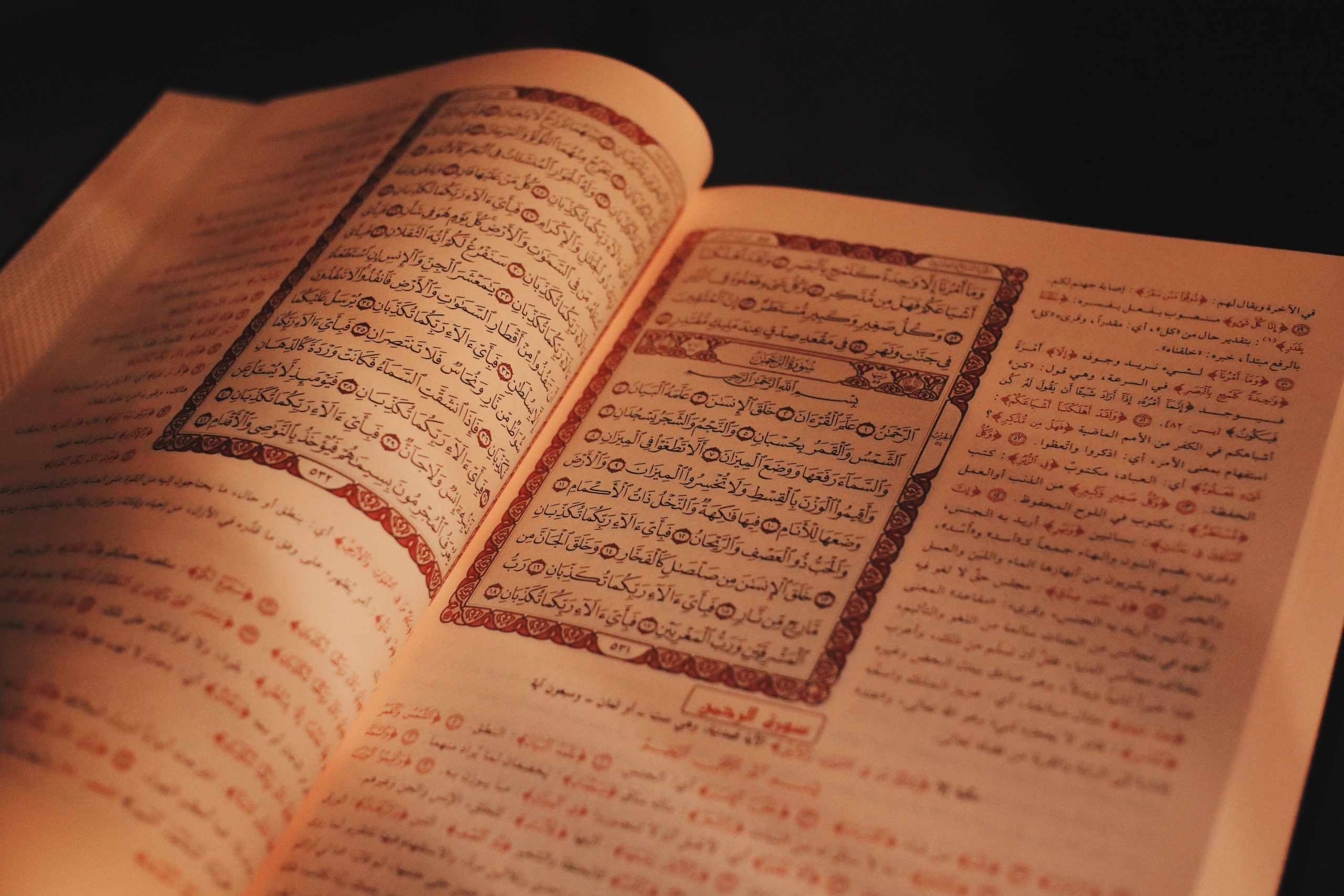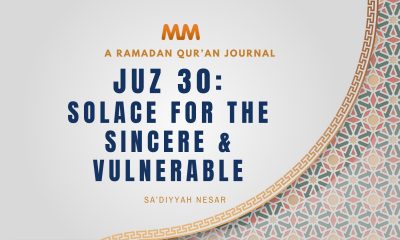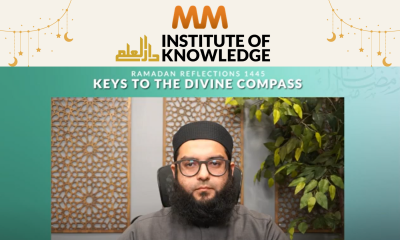There is a sentiment, whether verbalized or not, that the Quran is random and unorganized in how it presents its subject matter. Topics can jump from theology, to charity, to fighting, then back to theology, all within a few āyāt. This series aims to dismantle the idea of a “random” and “disjointed” Quran by demonstrating a level of organization, structure, and cohesion across the text that is so incredible that the reader is forced to look beyond the possibilities of a human author for answers.
Sūrat al-Fātiḥah
I will begin where Allah ﷻ begins, and start with the organizational study of the greatest sūrah of the Quran, Sūrat al-Fātiḥah (The Opening).1 Even the seasoned reciters of this sūrah may be surprised at the amount of depth in its structure.
Sūrat al-Fātiḥah is unique in that it is said to have been revealed twice2, once in Makkah, and again in Madinah. It is the sūrah that Muslims recite in every unit of ritual prayer, and the most comprehensive in its summary of a person’s relationship with Allah ﷻ.
Keep supporting MuslimMatters for the sake of Allah
Alhamdulillah, we're at over 850 supporters. Help us get to 900 supporters this month. All it takes is a small gift from a reader like you to keep us going, for just $2 / month.
The Prophet (SAW) has taught us the best of deeds are those that done consistently, even if they are small.
Click here to support MuslimMatters with a monthly donation of $2 per month. Set it and collect blessings from Allah (swt) for the khayr you're supporting without thinking about it.
Taking a macro-view of the entire sūrah3, it appears to be organized in a ring structure, with the theme of worship permeating throughout.4
| A – Worship (1-3) |
| B – Worship and Prayer (4) |
| A’ – Prayer (5-7) |
I am numbering the āyāt based on the opinion that the basmalah5 is not a part of the sūrah. Perhaps the following analysis can act as further proof of this opinion being the correct one.
Breaking the macrostructure into its individual components, it seems that Section [A] can be laid out into its own mirror structure.
Section [A] – Worship (1-3)
| A1 – All praise and thanks belong to Allah, Master of all peoples (1) |
| A2 – The Most Merciful, |
| A2’ – the Infinitely Merciful (2) |
| A1’ – The Owner of the Day of Accounting (3) |
Grammatically, these āyāt are actually one continuous sentence. Allah ﷻ begins and ends the mirror with mention of His amazing attributes and sandwiches two references to His mercy in between. This mirror describes the One worthy of being worshiped.
Summarized more succinctly, this mirror can be shown as:
| A1 – Allah’s grandeur and awesomeness (1) |
| A2 – Allah’s mercy (2a) |
| A2’ – Allah’s mercy (2b) |
| A1’ – Allah’s grandeur and awesomeness (3) |
The next āyah, constituting all of Section [B], is a two-part sentence that perfectly transitions between the first and last mirror structure. The statement of “You alone we worship,” links back to the first sentence (Section [A]) and the second half, “You alone we ask for help,” connects to the next section, Section [A’].
The final three āyāt also appear to form a small mirror:
Section [A’] – Prayer (5-7)
| A3 – Guide us on the Straight Path (5) |
| A4 – The path of those you favored (6a) |
| A4’ – Not of those who incurred anger (6b) |
| A3’ – nor of those who went astray (7) |
Grammatically, these āyāt also form one continuous sentence. We pray for guidance, then spend the rest of the prayer defining that guidance. We want to be guided like those before us (a show of mercy), not like those who incurred anger – the Arabic does not associate Allah ﷻ with the anger, which is another show of mercy – nor of those who went astray because of their lack of guidance.
Summarized another way, the mirror can be presented as:
| A3 – Guidance (5) |
| A4 – Mercy emphasized (6a) |
| A4’ – Allah is not associated with wrath; Mercy emphasized (6b) |
| A3’ – Lack of guidance (7) |
Taken altogether, we find that the first and last mirror correspond to each other – mercy is emphasized twice in the center of each – and that the central āyah of the sūrah contains the main ideas of both mirrors.
| A – Ring |
Worship: Mercy centered and stressed twice |
| B – Center |
Worship and Prayer |
| A’ – Ring |
Prayer: Mercy centered and stressed twice |
Thus, we see that Sūrah al-Fātiḥah has a concentric structure, consisting of two corresponding outlying parts – themselves consisting of smaller mirrors – that enclose a central part relating to them both.
| A1 – All praise and thanks belong to Allah, Master of all peoples (1) |
| A2 – The Most Merciful, (2a) |
| A2’ – the Infinitely Merciful (2b) |
| A1’ – The Owner of the Day of Accounting (3) |
| B – You alone we worship (4a)
B’ – and You alone we ask for help (4b) |
| A3 – Guide us on the Straight Path (5) |
| A4 – The path of those you favored (6a) |
| A4’ – Not of those who incurred anger (6b) |
| A3’ – nor of those who went astray (7) |
Just as interesting, we see that the sūrah is split perfectly between Allah ﷻ and us, His servants.
| A – The Worshiped |
All praise and thanks belong to Allah, Master of all peoples (1) The Most Merciful, the Infinitely Merciful (2) The Owner of the Day of Accounting (3) |
| B – The Worshiped followed by the worshippers |
You alone we worship, and You alone we ask for help (4) |
| A’ – The worshippers |
Guide us on the Straight Path (5) The path of those you favored (6) Not of those who incurred anger nor of those who went astray (7) |
Delving deeper into the nuances of this sūrah, we find cohesion even on a grammatical level. Specifically, we find that the middle section, Section [B], links the two halves of the sūrah together from a grammatical point of view.
As mentioned earlier, Section [A] is one continuous sentence. Of particular note is that it is a sentence that begins with a noun, which makes it a nominal sentence.6 In contrast, the final sentence, Section [A’], begins with a verb and is therefore a verbal sentence.7 Bridging these two parts together, the central āyah is made of two statements where the noun has been brought forward of where it would typically be in an Arabic sentence.8 Thus, the two statements begin with a noun and end with a verb. This matches perfectly with the two sentences on either side of this āyah.
| A – Nominal sentence (1-3) |
| B – Noun → Verb (4) |
| A’ – Verbal sentence (5-7) |
And finally, there is a rhetorical benefit to the grammatical structure of the sūrah. In Arabic, sentences that begin with nouns are considered independent and permanent.9 In contrast, sentences that begin with a verb are considered dependent and time-bound.10 It is astounding that the section that speaks of Allah ﷻ is nominal (as He is Permanent and Independent of all creation) and the section that describes us and our prayer is verbal (since we are mortal beings that are dependent on Allah ﷻ).
And Allah ﷻ knows best.
*If the study of the Quran’s structure interests you, please check out Heavenly Order for many more examples of the Quran’s amazing organization and coherence.
Related:
– [Podcast] Ramadan Vibes: Connecting with the Quran | Sh Muhammad Ziyad Batha – MuslimMatters.org
– From The Chaplain’s Desk: Engage With The Quran – MuslimMatters.org













Gibran Mahmud
May 19, 2023 at 6:47 PM
Exellent
Shoaib
May 19, 2023 at 8:25 PM
Stunning. Allahu Akbar.
Spirituality
May 21, 2023 at 9:29 AM
As Salamu Alaikum,
Amazing as this work is, I would urge some caution. The ‘ring structure’ of the Quran discussion (led by in the west by Michel Cuypers and Raymond Farrin) is based on the fact that ancient semetic texts, including classical Arabic poetry, possessed this structure. Cuypers and Farrin went went looking for this structure in the Quran and found it in many places.
Farrin was floored by what he found. He decided that no human could have arranged the Quran in such a structure, so the authorship must be divine. He became Muslim (alhamdhulillah).
On the other hand, Cuypers is a non-Muslim. He believes that the ring structure of the Quran is evidence that it can from an ancient Christian monastic setting, where this structure was presumably well known.
Whatever one thinks of their argument (and as a Muslim, I lean towards Farrin), there is a problem.
The problem is that we Muslims believe that the Quran, as the divine word of God, is inimitable – it can’t be imitated. There is nothing like it. It is not poetry, and it is not prose, and therefore, we can’t expect it to fully follow the rules of ancient semetic texts either. The Quran is its own literary form. Allah does not have to follow ring structure (although He can do so if He wishes, and when He wishes).
We can’t base our belief/awe of the Quran based on the fact that it may or may not fit a particular structure, literary or otherwise. The Quran, as it says, is foremost a Book of guidance, and that’s what we should expect from It.
What if insights from ‘ring structure’ contradict traditional Quranic interpretation/tafseer, hadith and ijmaa? In the ‘Banquet’ (which explores the ring structure of Sura Maeda, apparently in amazing depth) Cuypers has supposedly found an ‘alternative’ reading of the Quran in which the people of the Book do not have to submit to Islam.
Finally, the whole ring structure argument is uncomfortably reminiscent of Rashad Khalifa’s ‘number 19’ miracle, in which he supposedly found that the Quran had a complex internal mathematical code linked with the number 19 and its multiples. Unfortunately (for him) Khalifa found that two verses of the Quran (Tawba 128 and 129) didn’t fit into his code, and ended up tossing them out. He ended up creating his own sect, the “Submitters” who along with these two verses of the Quran also reject all hadith.
Spirituality
May 22, 2023 at 9:59 AM
These arguments are also reminiscent of the old argument that the Quran is of divine origin because it presents observations from the natural world that match with modern science. The argument went that no one during the Prophet (s) time, and certainly not the Prophet (s) himself, could possibly have known these facts, which are the result of modern scientific discovery.
However, non-Muslims as well as Muslims have raised serious questions about some of these arguments. They range from: certain facts that supposedly were not known by anyone at the time of Quran revelation were in fact known (ie, mountain have roots was mentioned in the old testament) or that the words used in the Quran can be interpreted differently (ie, alaqah is translated as ‘blood clot’ or ‘thing that hangs) and we just are cherry picking one shade of meaning today to fit with modern science.
(One can read more about this from Hamza Tzortzis: “DOES THE QUR’AN CONTAIN SCIENTIFIC MIRACLES? A NEW APPROACH ON HOW TO RECONCILE AND DISCUSS SCIENCE IN THE QUR’AN”)
For Muslims, this should not bother us in the least, because the Quran does not claim that it is a miracle because it presented ‘amazing’ new facts (about the natural world, religion, etc). On the contrary, the Quran says that it is brining nothing new.
Similarly, the Quran never claims that it is a miracle because it is is a truly amazing example of some existing literary form. On the contrary, the Quran says it is its own, unique, literary form.
And Allah knows best!
Abdulhai
August 18, 2023 at 6:19 AM
Asalamualikum!
Your appreciation is uplifting. Skills were honed through scholarly guidance and study. Structural analysis enhances the understanding, though challenges in nuances exist. This approach illuminates Quranic connections.
May Allah reward your efforts.
Thanks!